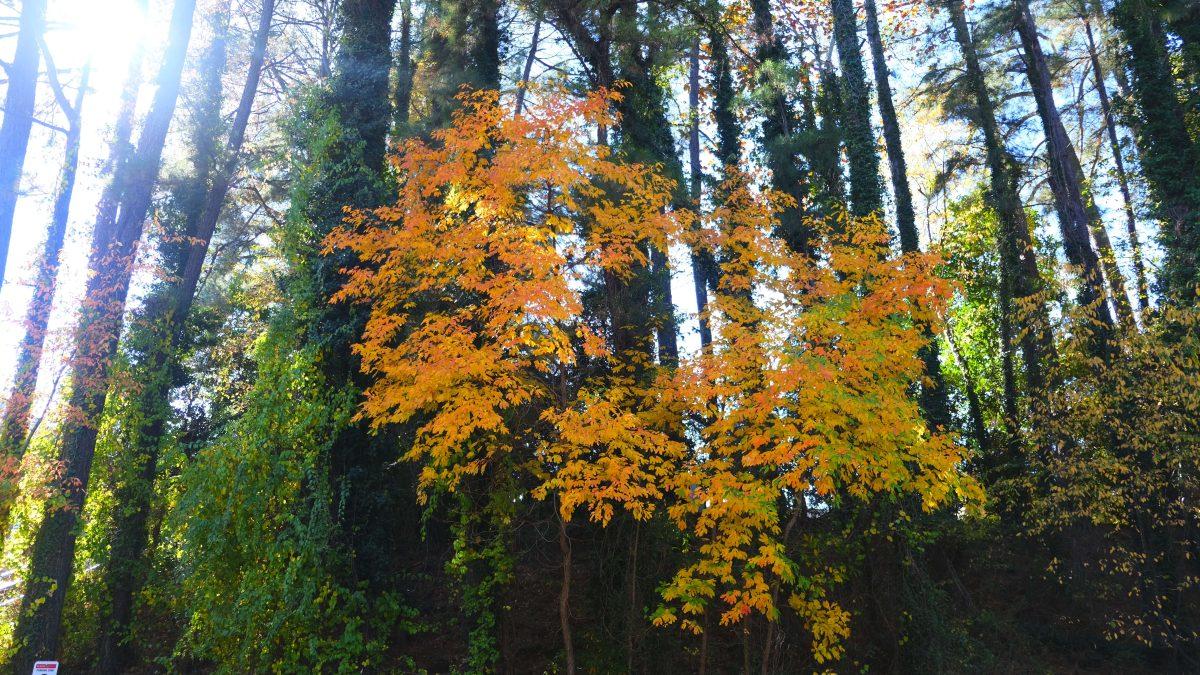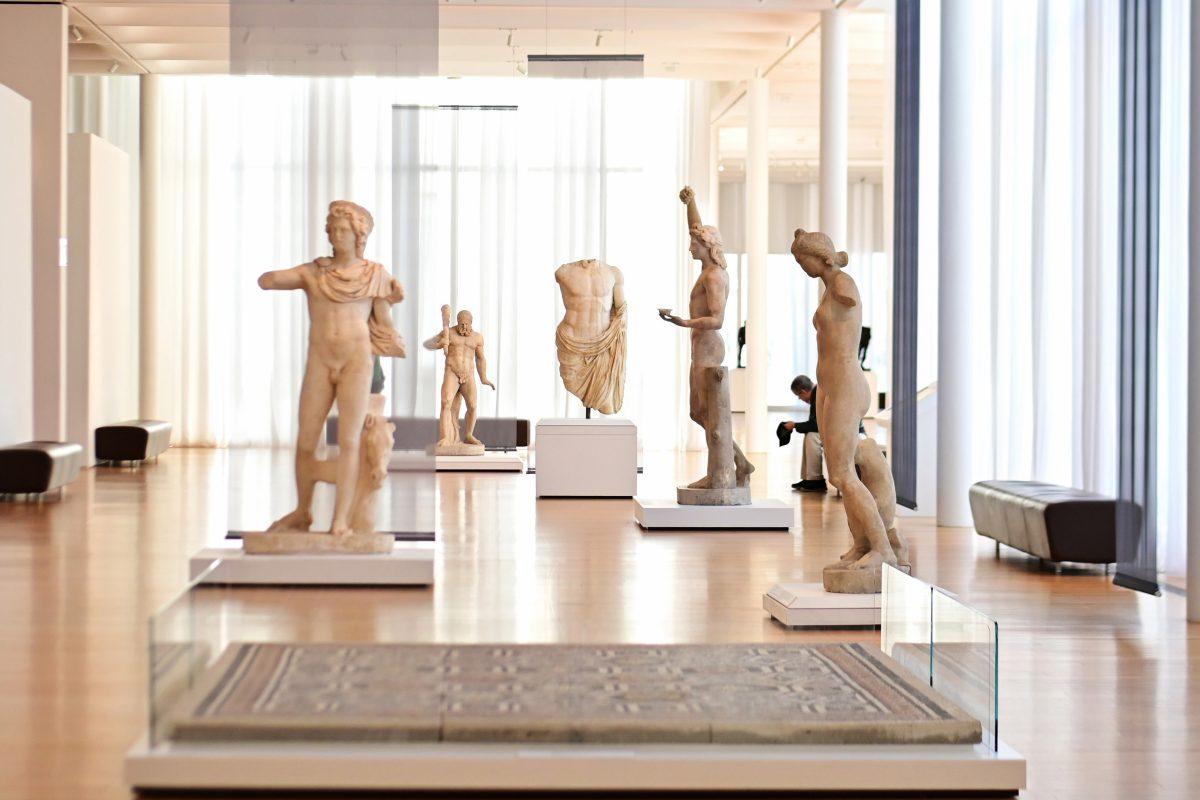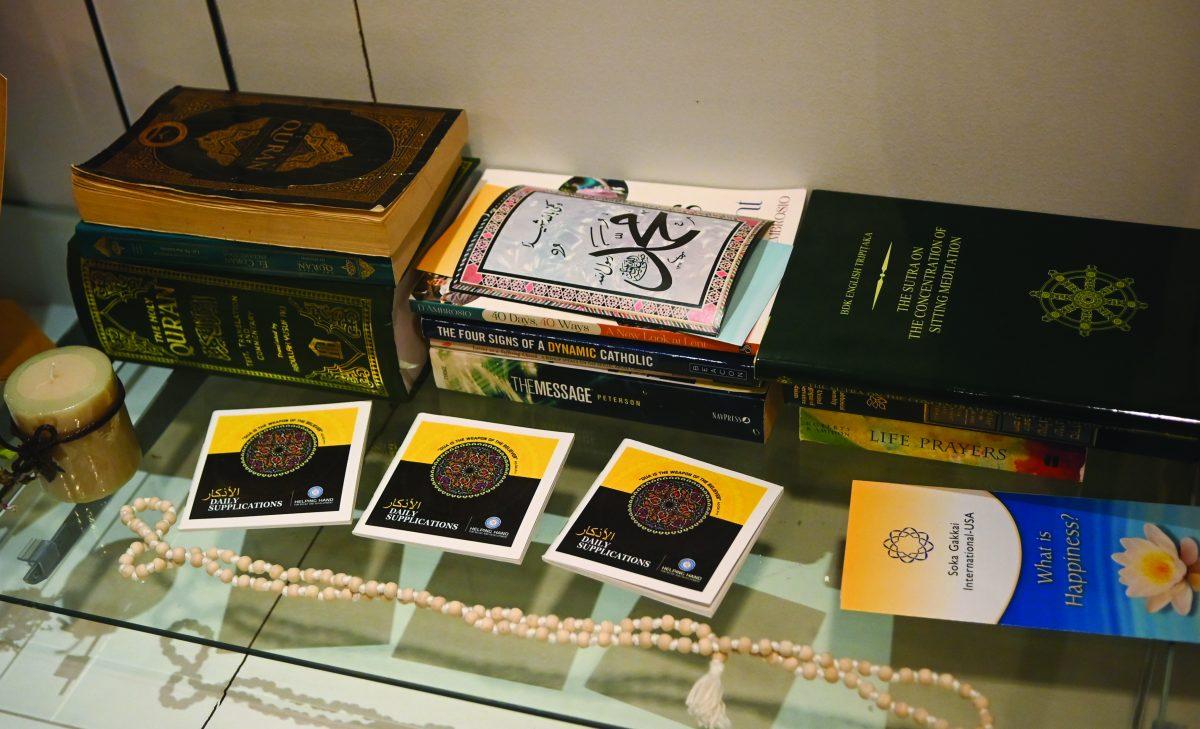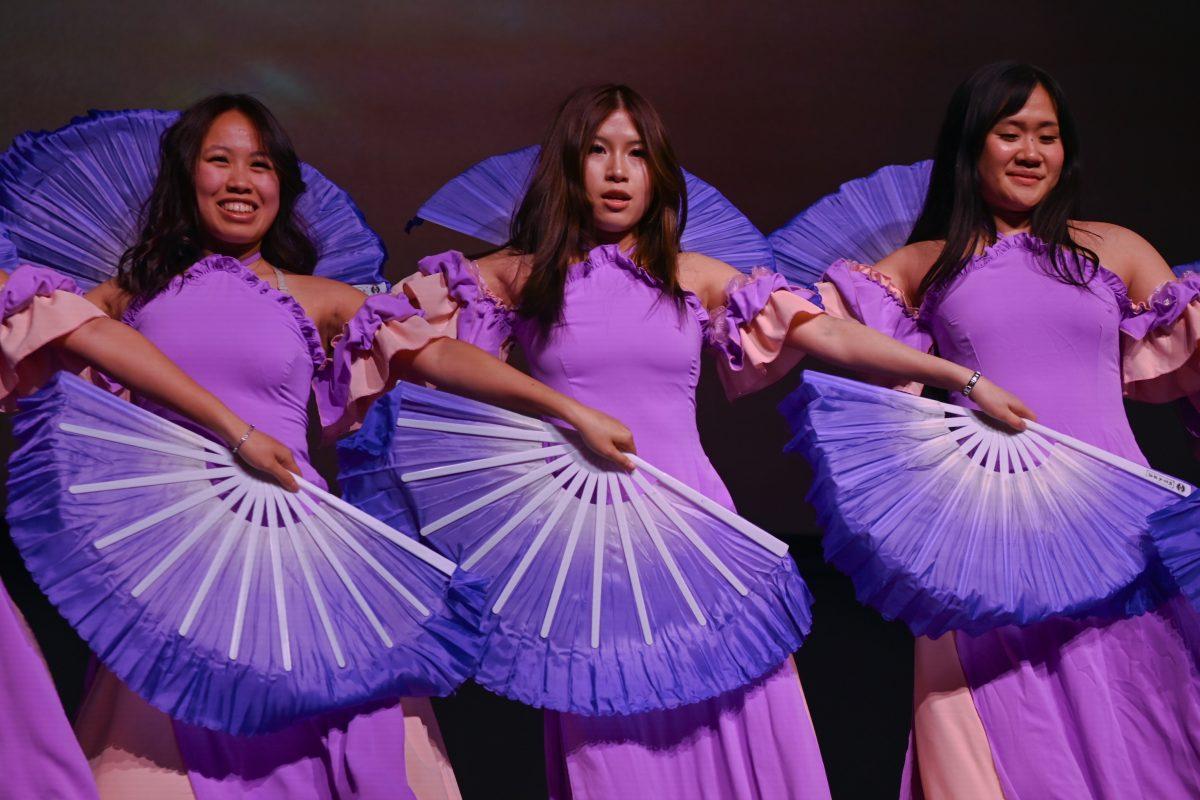Yellows, greens, oranges and browns all fade into a vast expanse of blue. Soft sounds of skirting leaves littering the pavement and grass. As the trees experience their yearly ritual of shedding their leaves, it’s time to highlight a few that stand out on NC State’s campus.
NC State’s best trees were chosen via an informal survey of dendrology students, groundskeepers and professors on campus. Stephanie Jefferies, a teaching associate professor in the department of Forestry and Environmental Resources, is one such specialist.
Jefferies and a few of her students are working on a campus tree trail, allowing students to learn about trees on campus through a guided audio tour with descriptions of each tree.
“What I really want people to do is go on a walk and learn about campus trees,” Jefferies said. “Each of the students working on the tree trails is specialized in something. There’s one focused on ecosystem services, one on wildlife, one on history and indigenous use.”
Without further ado, here are a few notable trees on North Campus.
Ginkgo, Park Shops (Ginkgo biloba)
This tree may be one of the only trees on campus with a cult following. Unique in its form, the gingko’s leaves change into a bright yellow as it prepares to drop its fan-shaped leaves. Sandwiched between Park Shops and Page Hall, this tree towers above them both.
“That’s a really cool example of what’s called a living fossil,” Jefferies said. “It’s the only tree in its order. It was known as a fossil before it was rediscovered in rural China, and now it’s all over the world.”
And all over campus too. The gingko can also be found next to D.H. Hill Jr. Library and scattered around the Memorial Belltower. The leaves are also notable for their rubbery feel and unique structure fanning around each branch in a fractalling display.
Willow Oak, D.H. Hill Jr. Library (Quercus phellos)
The willow oak in front of D.H. Hill Jr. Library is a massive gateway into the Brickyard, where the leaves of this tree cover the steps. They also surround the tree in its mulched grove.
The acorns of the oak look like a standard, stereotypical acorn, but the leaves are shaped like oblong ovals, which makes it an oddity in the Quercus family. The willow oak is an ideal tree for the City of Oaks and the urban forest setting that the groundskeepers maintain.
Ricky Hilburn, the landscape construction manager at NC State, is one of the people responsible for purchasing the inventory of trees on campus and overseeing installation.
“We look for high canopies and good limb structure,” Hilburn said. “One of the main trees we have, historically, is the willow oak. They are aging out. A lot of our canopy on main campus is 70, 60, to 100 years old.”
Osage Orange, Global Courtyard (Maclura pomifera)
This Osage Orange is notable for its giant fragrant fruit and wavy limb structure. Its leaves shift to a yellow before dropping into the Global Courtyard, sharing its space with a pecan next to Tompkins Hall.
Sassafras, Schaub Food Science parking lot (Sassafras albidum)
The sassafras tree is an understory tree, which means it can grow in the shade and complement the overstory of the urban forest next to the Food Science building.
Sassafras trees have mitten-shaped leaves that pop as the leaves change, and when they’re crushed up they smell like a familiar fruity cereal. They also have extensive indigenous use, incorporating the edible leaves in teas and stews, as well as medicinal tonics that help common colds. The roots are used for root beer flavoring.
“There’s a dozen or more understory trees that have more color, that do a lot more, and they enhance the higher canopy because they can grow in shade,” Hilburn said.
Bald Cypress, Rocky Branch Trail (Taxodium distichum)
Bald cypresses on Rocky Branch trail live in a family in an urban watershed before going under the bridge into Pullen Park.
“It’s a fun one to highlight because the common name bald cypress comes from because you think of conifers being evergreen.” Jefferies said.
Bald cypress can also be found in the Brickyard and off Dan Allen. It’s particularly adapted to urban environments because it’s used to the impervious surfaces of its swampy native habitat.
Some honorable mentions are the eastern white pine, buckeye, witch hazel, fringetree and dawn redwood in the Court of the Carolinas, and all kinds of maple and elm, which, along with oak, make up the majority of trees on campus.
There’s a lot of difficulties with managing the urban forest. The urban setting is hot and dry, and accommodations have to be made for impervious concrete surfaces and high traffic.
“There’s a huge demand for buildings on campus, and there’s a huge demand for landscape on campus and for those two things to live together,” Hilburn said.
The groundskeepers and forestry department work together to bring the campus ambiance, aesthetics and a healthy, optimized urban setting.
“People connect with trees, just viscerally, I think,” Jefferies said.














